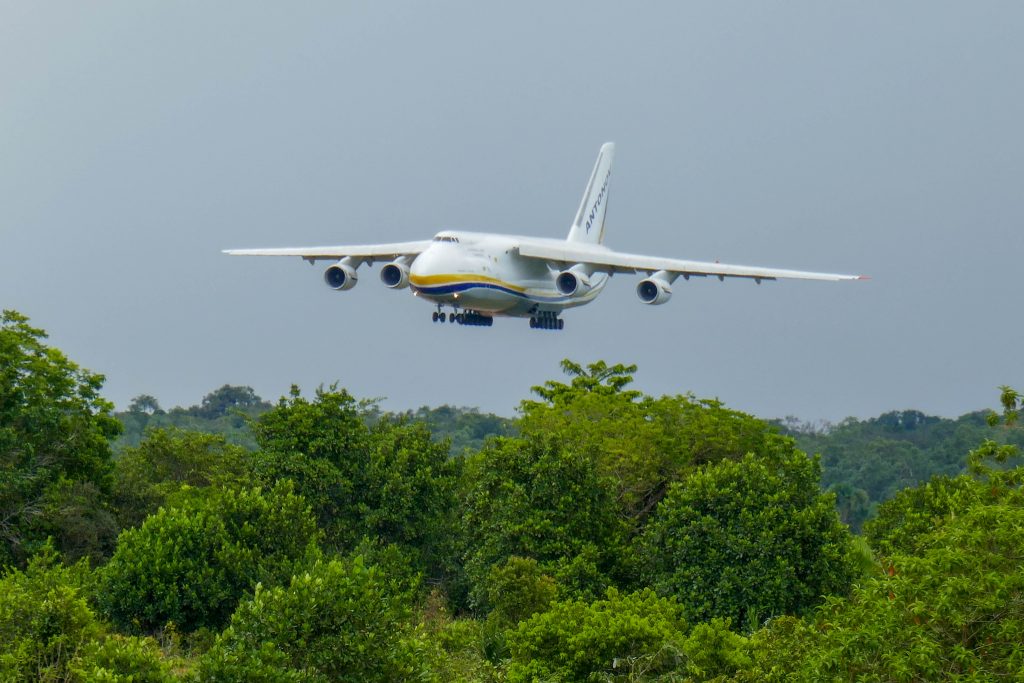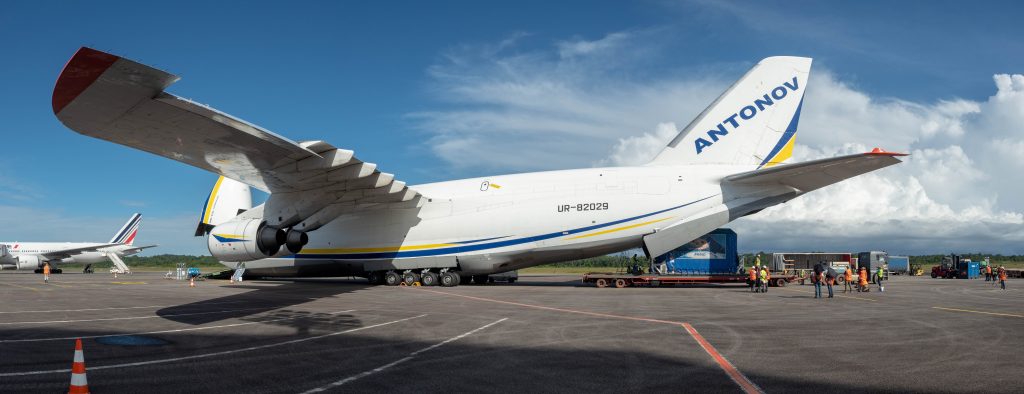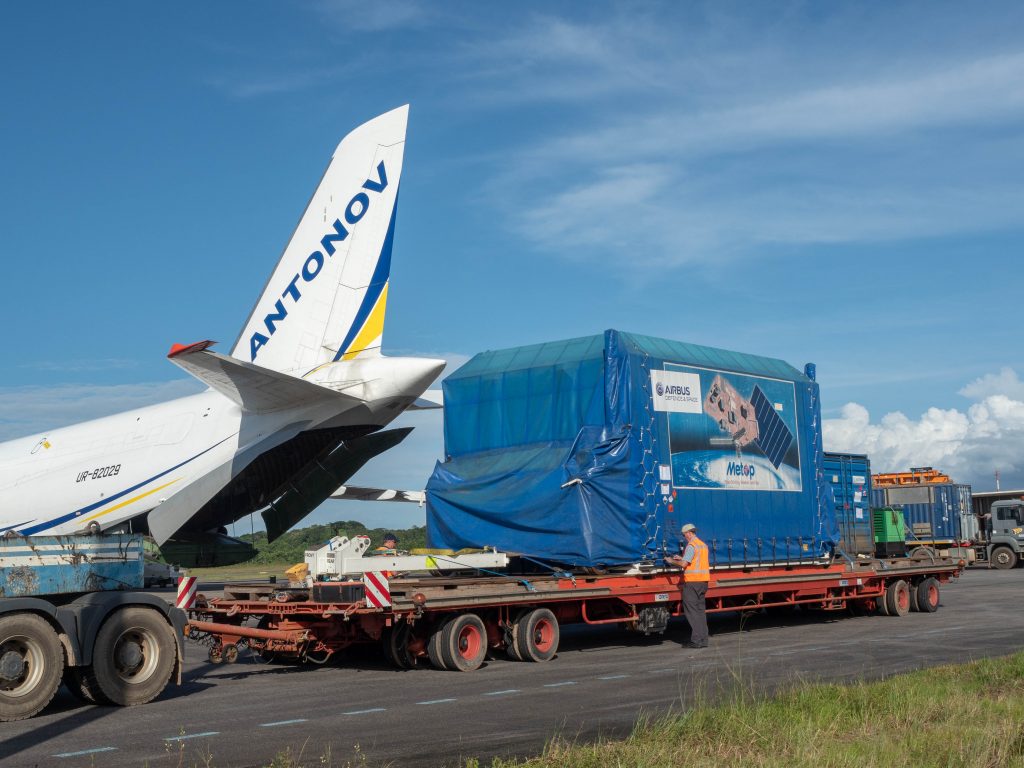The MetOp-C launch campaign has kicked off with the first of three Antonovs landing at Cayenne Airport, French Guiana on 20 June.

First Antonov landing (ESA)
The cargo aircraft transported 11 containers of equipment for ground support and IT-infrastructure. The second Antonov carrying the two main modules of the spacecraft, the Service Module and the Payload Module, followed a few days later. And the third flight brought the solar array.

Second Antonov at Cayenne airport (ESA)
This is in preparation for the launch later this year of the third polar-orbiting MetOp satellite, MetOp-C.
The first two satellites, MetOp-A and -B were launched in 2006 and 2012 respectively and are improving weather forecasts thanks to their ability, among other features, to measure temperature and humidity profiles from a relatively close 800 km-altitude orbit.

Unloading MetOp-C (ESA)
Launching a new satellite every 5–6 years guarantees a continuous delivery of high-quality data for medium- and long-term weather forecasting and climate monitoring until at least 2023.
The launch of MetOp-C will ensure that these observations will also be available on a daily basis in the future.
Read more about the MetOp mission.

Discussion: no comments